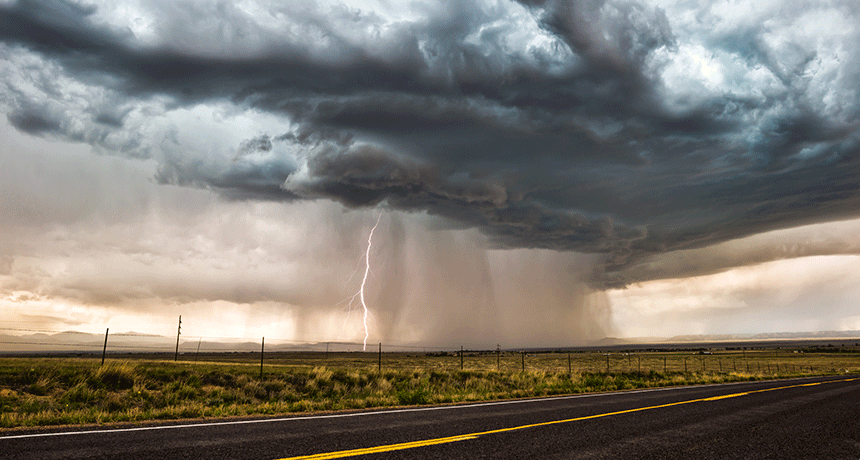
As we make our way out of the La Niña weather pattern, we are left with unpredicted disruptions to projects and contractual risk allocations, which were inadequate for dealing with the last three years of increased inclement weather events (i.e., extreme weather).
This four-part series will explore the following:
- known weather related risks and how extreme weather events are impacting the construction industry (Part 1);
- practical implications for projects and disputes that are likely to arise as a result of increases in extreme weather events (Part 2);
- what to expect with the predicted El Niño weather on the horizon, the related risks and reflect on the importance of adequate risk allocation moving forward (Part 3); and
- typical project concerns related to inclement weather and managing long-term risks (Part 4).
Weather and Contracts
The allocation of risk in contracts inevitably determines who is responsible for the time and/or cost implications associated with extreme weather events.
While inclement weather is often an identified risk in most contracts and typically entitles contractors to claim extensions of time for a specified number of days, contractors may also be entitled to claim under force majeure for weather events (depending on the definition).
Ultimately, with the impacts of the increased exposure to weather events continuing to be felt, what has traditionally constituted “inclement weather” (and how it has been contractually managed) is likely to evolve as contractors give more consideration to the financial vulnerability and risk imposed by the growing unpredictable nature of extreme weather events. The management of these risks under future contractual arrangements will be discussed in more detail in Part 4 of this series.
Known Weather Risks
In Australia, the construction industry has always been vulnerable to extreme weather and flooding. However, extreme weather events are becoming more frequent and severe, impacting many projects and exposing principals and contractors to increased risk.
Examples of known weather risks and potential project impacts include:
| Risk | Potential Impacts |
| Rainfall and Flooding | a. reduced productivity and concerns over safety leading to stoppage of work;
b. the collapse of excavations or flooding requiring pumping, dewatering, and reworks to be undertaken; c. damage to equipment and materials, leading to delays; d. site inaccessibility; e. equipment and trucks becoming bogged; f. unsafe working environment; and g. continual need to re-sequence and reschedule activities, including earthworks / concreting. |
| Extreme Wind | a. decreased productivity due to the inability to safely progress work;
b. increased potential for injury and physical damage if materials are not adequately secured; and c. decreased visibility and safety, potentially endangering employees / causing equipment failures, leading to work stoppage. |
| Extreme Heat | a. reduced productivity from heat and higher risk of accidents due to fatigue and concerns over safety leading to stoppage of works; and
b. increased potential for materials and/or equipment becoming too hot to use, leading to delay and disruption. |
| Bushfires | a. potential building restrictions in fire prone areas;
b. increased potential for damage to equipment and plant; c. increased safety concerns for employees; and d. site inaccessibility / safety concerns leading to the inability to progress works resulting in delay. |
Despite the awareness of these risks, the construction industry is facing considerable project delays and disruption associated with extreme weather events. It is expected that the probability of these events occurring will continue to increase in frequency and intensity in the coming years, which will adversely impact the progression of work and have significant financial consequences for principals and contractors across the industry (read more here).
Impacts of Extreme Weather Risks
At a high level, the construction industry is significantly impacted by increased extreme weather events. These impacts include:
- increased project costs;
- difficulties with scheduling and planning of work due to the unpredictability and increased frequency of such events;
- increased for potential damage to equipment and plant;
- material shortages due to extreme weather increasing market pressure on the availability of materials;
- increased risks surrounding safety concerns associated with site conditions; and
- unavoidable delays and disruption arising from extreme weather, including saturated ground conditions.
To mitigate the unpredictable nature of weather, we urge industry participants to regularly consider ways to manage extreme weather risks, monitor ongoing changes to policies and regulations relating to building codes, and regularly check weather stations close to the project site. Participants should also review management plans and implement strategies that may minimise the risk of delay and disruption resulting from extreme weather events, to facilitate the completion and success of their project.
Lamont Project & Construction Lawyers
Our team at Lamont Project & Construction Lawyers, are specialist advisors in the major project and construction sector and are highly experienced in resolving complex matters across all industries. We have the industry knowledge and experience to assist both principals and contractors in their unique challenges and the implementation of contractual frameworks that best align with project objectives.
If you have any question about any matters raised in the above articles, or more generally as it relates to your specific circumstances, please contact Lamont Project & Construction Lawyers.
The content of this article is for information purposes only, it does not discuss every important topic or matter of law, and it is not to be relied upon as legal advice. Specialist advice should be sought regarding your specific circumstances.
Contact: Peter Lamont or Quinn Hironaka
Email: [email protected] or [email protected]
Phone: (07) 3248 8500
Address: Suite 1, Level 1, 349 Coronation Drive, Milton Qld 4064
Postal Address: PO Box 1133, Milton Qld 4064
